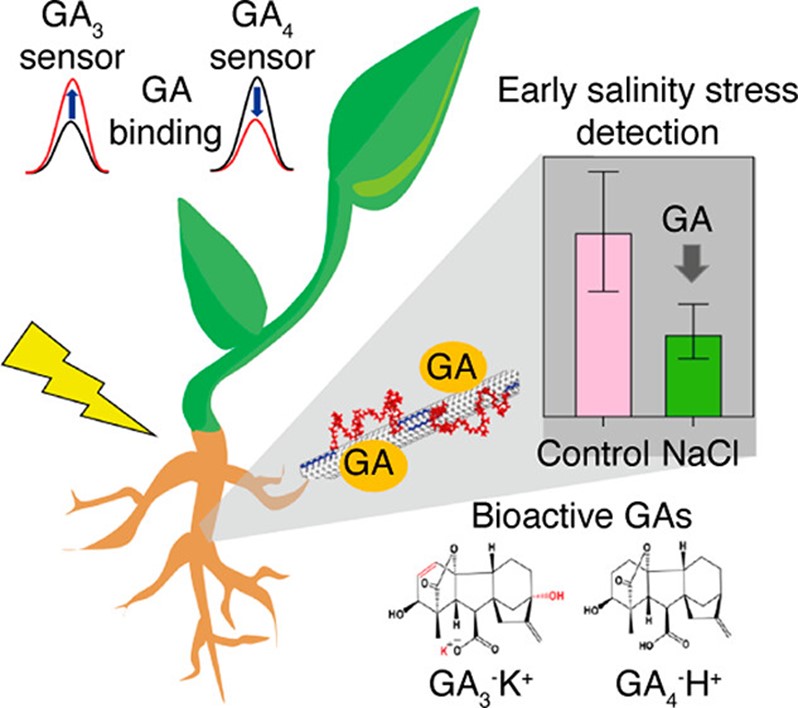2023 AIChE Annual Meeting
(365c) Near-Infrared Fluorescent Carbon Nanotube Sensors for the Plant Hormone Family Gibberellins
Authors
Jianqiao Leslie Cui - Presenter, Massachusetts Institute of Technology
Mervin Ang, Singapore-Mit Alliance For Research and Technology
Kulaporn Boonyaves, Mahidol University
Minkyung Park, Massachusetts Institute of Technology
Duc-Thinh Khong, Singapore-Mit Alliance For Research and Technology
Volodymyr Koman, MIT
Thomas K. Porter, MIT
Seo Woo Choi, Massachusetts Institute of Technology
Kwanghun Chung, Massachusetts Institute of Technology
Nam-Hai Chua, Temasek Life Sciences Laboratory
Daisuke Urano, National University of Singapore
Michael Strano, Massachusetts Institute of Technology
Gibberellins (GAs) are a class of phytohormones, important for plant growth, and very difficult to distinguish because of their similarity in chemical structures. Herein, we develop the first nanosensors for GAs by designing and engineering polymer-wrapped single-walled carbon nanotubes (SWNTs) with unique corona phases that selectively bind to bioactive GAs, GA3 and GA4, triggering near-infrared (NIR) fluorescence intensity changes. Using a new coupled Raman/NIR fluorimeter that enables self-referencing of nanosensor NIR fluorescence with its Raman G-band, we demonstrated detection of cellular GA in Arabidopsis, lettuce, and basil roots. The nanosensors reported increased endogenous GA levels in transgenic Arabidopsis mutants that overexpress GA and in emerging lateral roots. Our approach allows rapid spatiotemporal detection of GA across species. The reversible sensor captured the decreasing GA levels in salt-treated lettuce roots, which correlated remarkably with fresh weight changes. This work demonstrates the potential for nanosensors to solve longstanding problems in plant biotechnology.


